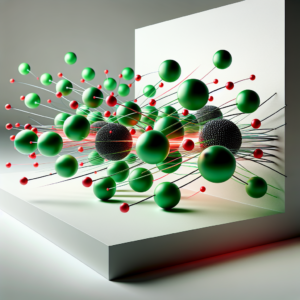Summary
This article explores the electrical conductivity of precious metals and their alloys, focusing on its measurement in Siemens per meter and variations across different materials. An updated table details the conductivity of metals like gold, silver, platinum, and newer additions like rhodium and iridium. The article highlights the importance of understanding conductivity variations in gold and silver alloys for accurate metal authenticity testing using tools such as the GemOro AuRACLE PRO and KEE Gold Tester.

Electrical Conductivity of Precious Metals: Understanding and Applications in Metal Authenticity Testing
- Introduction
Understanding the electrical properties of materials, particularly metals, is crucial in various technological and industrial applications. For precious metals like gold, silver, and platinum, electrical conductivity not only informs us about their inherent properties but also plays a vital role in authenticity testing. This article explores the fundamentals of electrical conductivity, its measurement, and how this property is harnessed in tools designed to identify and authenticate precious metals.
- Electric Conductivity Definition
Electrical conductivity is a measure of a material’s ability to conduct an electric current. It is determined by the ease with which electrons can move through the material. Metals, known for their free-moving electrons, exhibit high levels of conductivity. This property is inherent to the atomic structure of metals, where electrons are not bound tightly to their atoms, allowing them to flow freely under the influence of an electric field.
- Siemens Unit of Conductivity
The standard unit of electrical conductivity is the Siemens per meter (S/m). Siemens, often represented as 𝑆S, quantifies how readily a material can transmit electrical current. In the context of precious metals, understanding this unit helps in comparing how different metals and their alloys conduct electricity, which is critical for applications requiring precise electrical performance.
- Table of Electrical Conductivity for Common Metals
Here’s a table showcasing the electrical conductivity of some common precious metals and their alloys, which are often compared to standard metals:
Silver | 63 MS/m | 100% |
Copper | 59 MS/m | 94% |
Gold | 45 MS/m | 71% |
Aluminum | 38 MS/m | 60% |
Rhodium | 18.5 MS/m | 29% |
Iridium | 19.7 MS/m | 31% |
Palladium | 9.3 MS/m | 15% |
Platinum | 9.1 MS/m | 14% |
Rhenium | 14.3 MS/m | 23% |
- Application in Metal Testing Tools
In the jewelry and precious metal industries, tools such as the GemOro AuRACLE PRO and KEE Gold Tester leverage electrical conductivity to authenticate the quality of metals. These devices apply a small electrical charge to the metal and measure the response, which is indicative of the metal’s purity. For example, the higher the gold content, the higher the conductivity, allowing these tools to differentiate between pure gold and its less conductive alloys or counterfeits.
- Practical Uses of Electrical Conductivity in the Jewelry Industry
Electrical conductivity measurements are vital for jewelers and consumers alike, providing a quick and non-destructive method to verify metal quality and authenticity. These tests are especially important in environments where precise metal composition plays a critical role in product valuation and customer trust.
- Comment on Variability in 18 Karat Gold Alloys: It’s important to note that similar 18 karat gold alloys can exhibit different levels of electrical conductivity despite having the same gold content. This variation is due to the differing compositions of the alloying elements. For instance, an 18k gold alloyed with silver may have different conductive properties compared to one alloyed with copper or palladium, affecting how these materials interact with electrical currents. This characteristic is crucial for authenticity tests, as it helps in identifying not just the purity of the gold but also its potential alloy components.
- Conclusion
Electrical conductivity offers a window into the physical properties of metals, playing a crucial role in the testing and verification of precious metals. As technology evolves, so too does the precision of these testing tools, enhancing our ability to assess and guarantee the quality of precious metals. The ongoing development in conductivity measurement technologies promises further advancements in both industrial applications and consumer protection.


